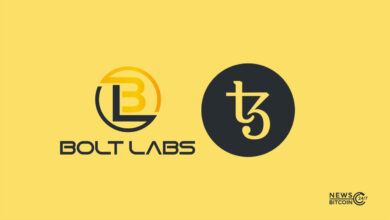How to Establish a Blockchain for Your Transactions

In its most basic form, a blockchain is just a record of activities and transactions, which is why it is well-suited for use in the financial sector. Decentralization means that it does not rely on the primary server as a source of authority, as is the case with most other blockchains.
The whole block is stored on every node in the system, so if one node varies from the others, it is easy to determine which is the “true” log to use.
There are a plethora of current blockchains that may meet your requirements, but how to create your own blockchain is a fantastic approach to gain a thorough understanding of how the technology works and how it functions best.
Steps to create your own blockchain
Let’s take a look at how to create a blockchain in only eight steps
- Determine a Suitable Use-Case Classification
- Analyze the Best Consensus Algorithms
- Choose the Best Platform
- Making the Nodes
- How to Create a Blockchain
- Creating APIs
- The design of the administration and user interfaces
- Including Future Technology
Benefits of Blockchain
The following are some of the advantages of adopting blockchain:
- Eliminate the need for intermediate entities.
- The ledger is immutable.
- Transparency
- Security
- Reliability
Case Studies for Blockchain Technology
Blockchain technology extends beyond cryptocurrencies and bitcoin; blockchain technology may be applied in a variety of industries, including:
- Real estates are classified as follows: Ownership of land
- Healthcare: Maintain the confidentiality of the patient’s information Finance
- Taxation and middlemen should be reduced, as should anti-money laundering and cross-border payment.
- Supply chain management: Keep track of goods when they are transferred from vendors to consumers ( Authenticity, original content creation)
- Cybersecurity: Distributed Denial of Service (DDOS) assaults
- Giving control back to the user is important. Take control of your data and safely share it with anyone you choose ( DID)
- Crypto-currency
- The mechanism for obtaining a vote
Types of blockchains
There are three kinds:
Private
Only used internally and when we have a deeper understanding of the users (e.g., Hyperledger Fabric)
Everybody can see what is going on since it is in the open (Bitcoin, Ethereum)
Hybrid
If you want to combine the first and second choices, you can do so.
There are two approaches to creating a blockchain.
1. How does one go about creating one?
You may either create a blockchain from start or fork, alter, and/or improve an existing blockchain open-source code if none of the options above meet your needs. For example, bitcoin cash is a fork of the bitcoin cryptocurrency. This third technique is more difficult and time-consuming, and it needs a great deal of effort and a strong team.
However, in this first post, we will construct a blockchain prototype from the ground up, allowing you to gain a full understanding of the blockchain’s state machine in the process.
2. What is the best way to construct one from the ground up?
In this section, we will first construct a block, then add the data (header and content) to it, then hash the block, and finally, but not least, we will chain all of the blocks together.
A block contains the information that was previously discussed, but we are going to eliminate part of it to make things more straightforward. Let’s get down to business with the details!



